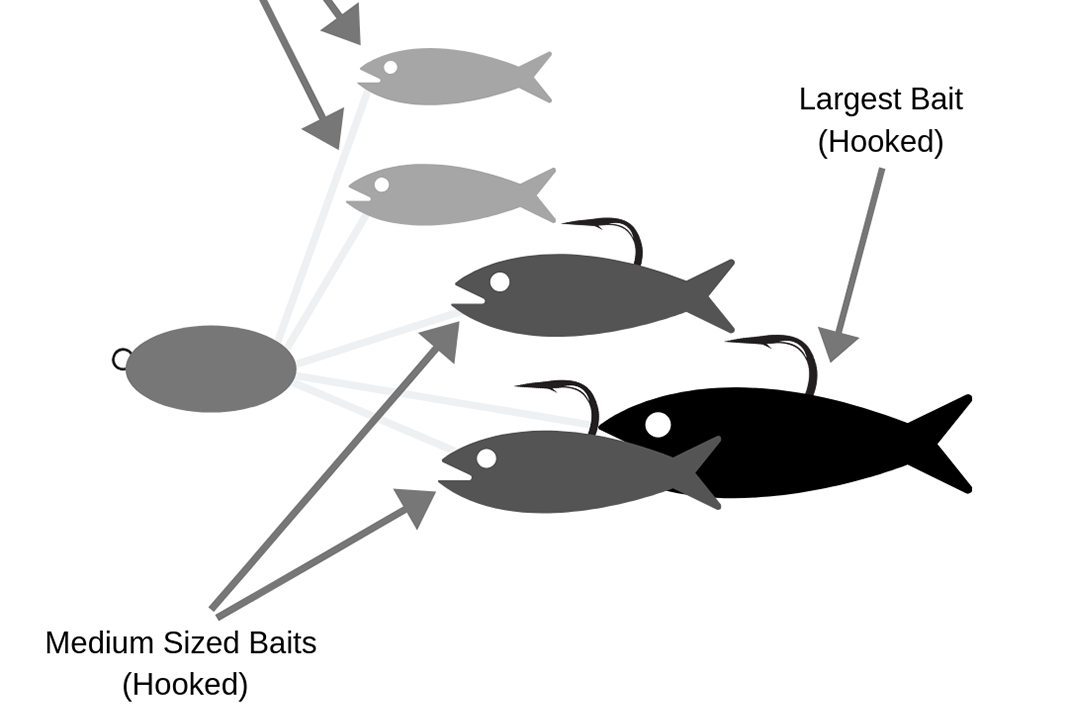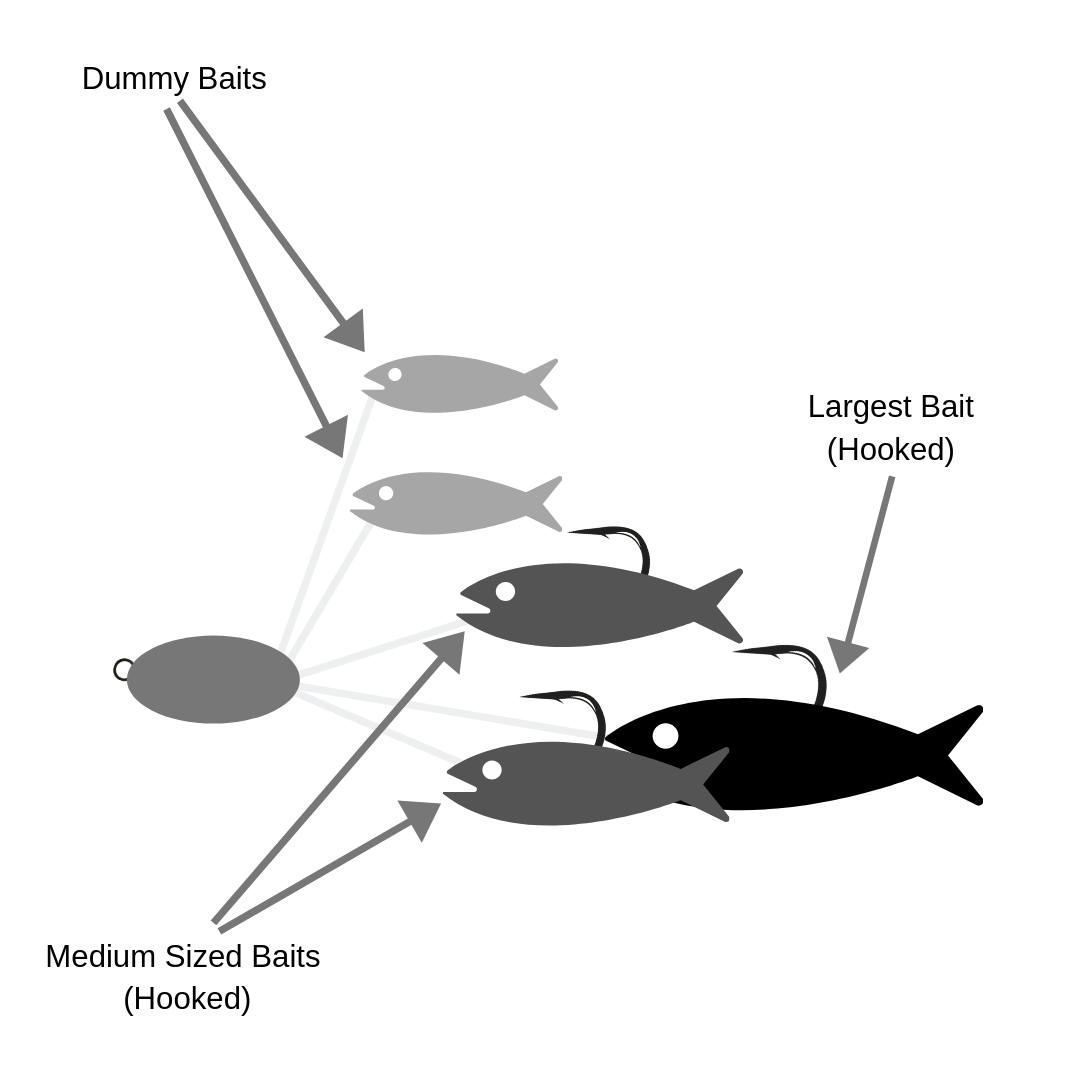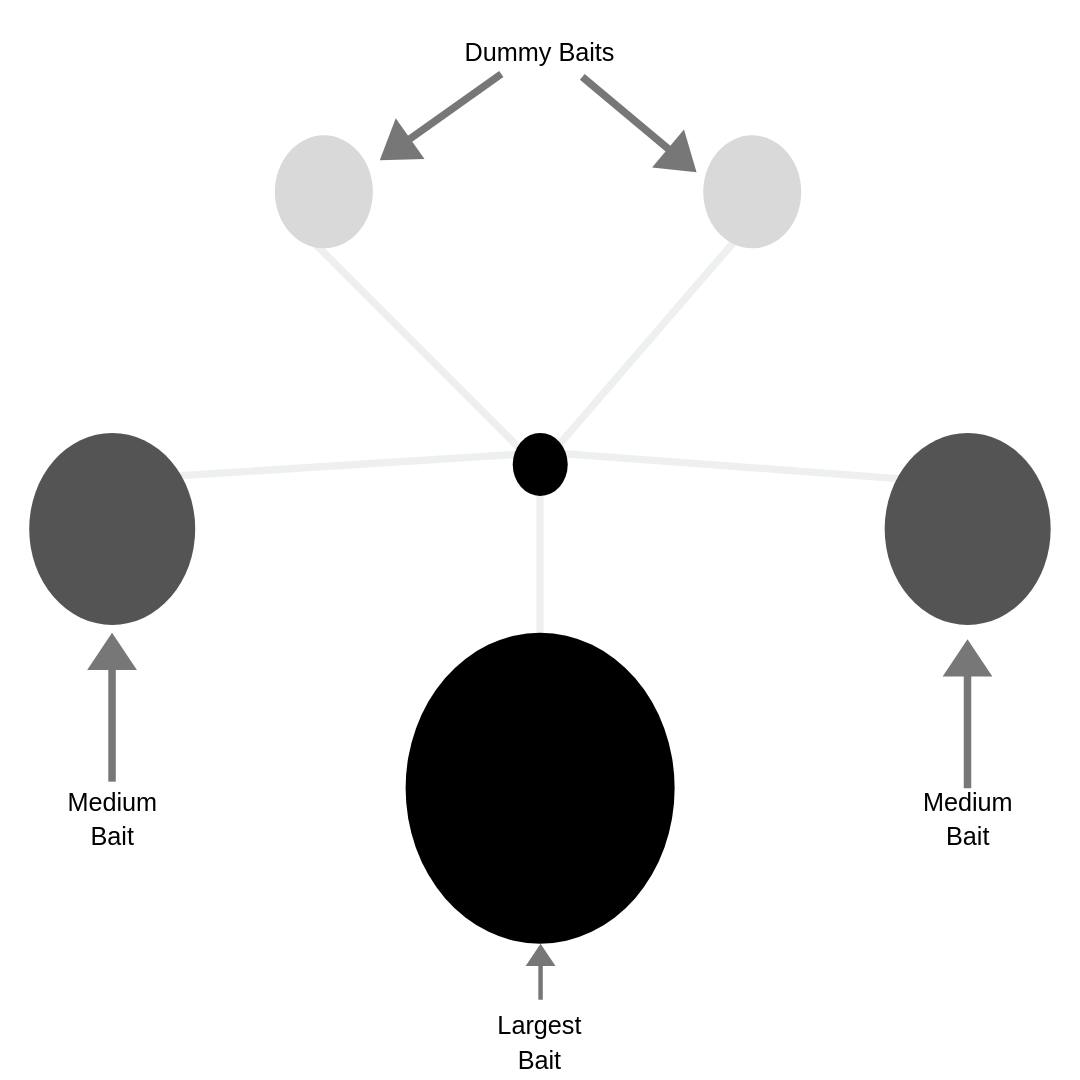
How To Set Up An Umbrella Rig
1. Take the rig out of the package
When taking an umbrella rig out of the package, it can look like a complicated nightmare. The numerous wires and blades can look daunting. However, breaking it down into the wire style and shape will make everything much easier. Starting with the wire size, the main detail to note is water clarity. When fishing in crystal clear water, thinner wire is desired. Thinner wire is harder for the fish to see and also because thinner wire is not as rigid it will allow the bait to move more fluidly in the water.
2. Shape the umbrella rig
Details and consistency are key when shaping the umbrella rig. This is one of the few hard baits that you, the consumer, need to adjust straight from the package. Simply pulling the bait out and putting hooks on will not suffice. There is a specific shape that will look more natural and put more fish in the boat. It starts with 2 small dummy baits on top, 1 large bait in the middle that is connected to a slightly longer and lower wire, and 2 mid size baits on either side of the large bait.
3. Choosing the plastics
When choosing which baits, the 2.8" Keitech Swing Impact Fat in a natural color like Ghost Rainbow Trout is excellent for the dummy baits. Sizing up just slightly, the 3.3" Keitech Swing Impact Fat in a color that has more presence, like a Green Pumpkin, are best when used on the side of the rig. These medium sized baits are likely going to get bit, however the cherry on top" is the largest bait that is slightly below and behind the rest of the baits. This creates the effect of the weakest linking straggling behind the school. Using a 3.8 Keitech Swing Impact Fatin Ayu will be a brighter and larger bait than the 2 Green Pumpkin swimbaits on either side of it. These subtle differences are the keys to getting bit.
Bonus tip: When rigging the largest bait, try dying or coloring the tail and head in chartreuse for extra distinction. This very small area of difference can be a target for the bass to zero in on.

